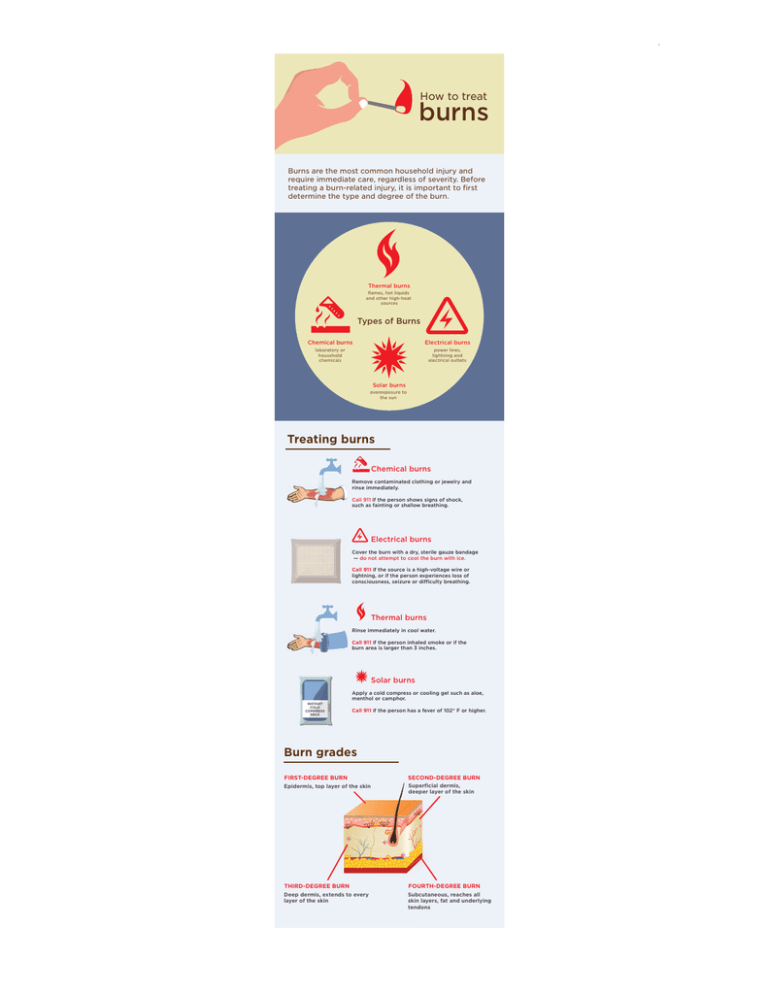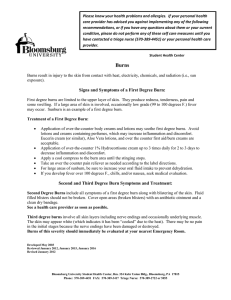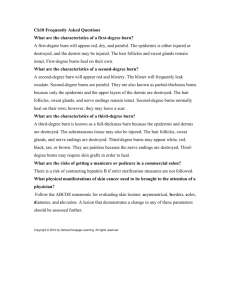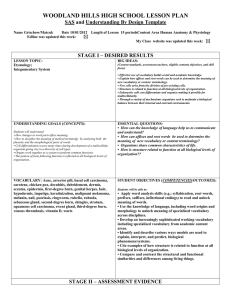
How to treat
burns
Burns are the most common household injury and
require immediate care, regardless of severity. Before
treating a burn-related injury, it is important to first
determine the type and degree of the burn.
Thermal burns
flames, hot liquids
and other high-heat
sources
Types of Burns
Chemical burns
Electrical burns
laboratory or
household
chemicals
power lines,
lightning and
electrical outlets
Solar burns
overexposure to
the sun
Treating burns
Chemical burns
Remove contaminated clothing or jewelry and
rinse immediately.
Call 911 if the person shows signs of shock,
such as fainting or shallow breathing.
Electrical burns
Cover the burn with a dry, sterile gauze bandage
— do not attempt to cool the burn with ice.
Call 911 if the source is a high-voltage wire or
lightning, or if the person experiences loss of
consciousness, seizure or difficulty breathing.
Thermal burns
Rinse immediately in cool water.
Call 911 if the person inhaled smoke or if the
burn area is larger than 3 inches.
Solar burns
INSTANT
COLD
COMPRESS
PACK
Apply a cold compress or cooling gel such as aloe,
menthol or camphor.
Call 911 if the person has a fever of 102° F or higher.
Burn grades
FIRST-DEGREE BURN
SECOND-DEGREE BURN
Epidermis, top layer of the skin
Superficial dermis,
deeper layer of the skin
THIRD-DEGREE BURN
FOURTH-DEGREE BURN
Deep dermis, extends to every
layer of the skin
Subcutaneous, reaches all
skin layers, fat and underlying
tendons
FIRST-DEGREE BURN
Symptoms Redness and peeling; skin feels
painful and hot to the touch
Treatment Apply cool compress or
immerse in water until pain subsides
Recovery Heals without scarring within
one week
SECOND-DEGREE BURN
Symptoms Swelling and blisters
Treatment Cover with sterile gauze to protect
from infection
Recovery Heals with mild scarring within
several weeks
THIRD-DEGREE BURN
Symptoms Loss of skin layers; destroys hair
follicles and sweat glands
Treatment Surgery with possible grafting
Recovery Heals with significant scarring
within months
FOURTH-DEGREE BURN
Symptoms Loss of all skin layers extending
to the bone and muscle tissue
Treatment Surgery with skin grafting
Recovery Significant scarring; may result
in disability or death
Did you know?
1 MILLION
More than 1 million
people each year seek
medical treatment for
burn-related injuries.
500,000
100,000
50,000
50,000 people are
hospitalized due to
burn-related injuries.
10,000
5,000
4,500 people die from
burn-related injuries.
NUMBER OF
PEOPLE AFFECTED
BY BURN INJURIES
EACH YEAR
From the expert
“Less severe burns can be treated with local wound
care and often heal well on their own. Severe burns
that involve larger areas of the body and deeper
layers of skin may require medical care. Be sure to
monitor severe burn scars, as there is an increased
risk of skin cancer.”
— Dr. Young Lee, dermatologist at Sharp Rees-Stealy Medical Group
www.sharp.com/news
© 2016 Sharp HealthCare. All rights reserved.





